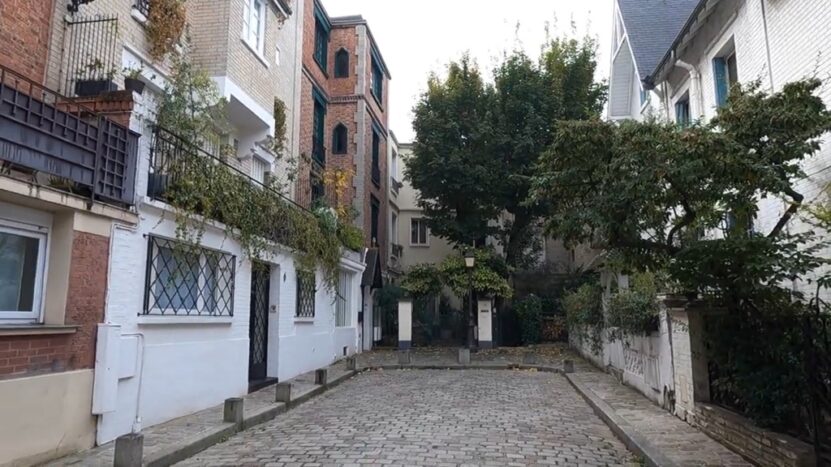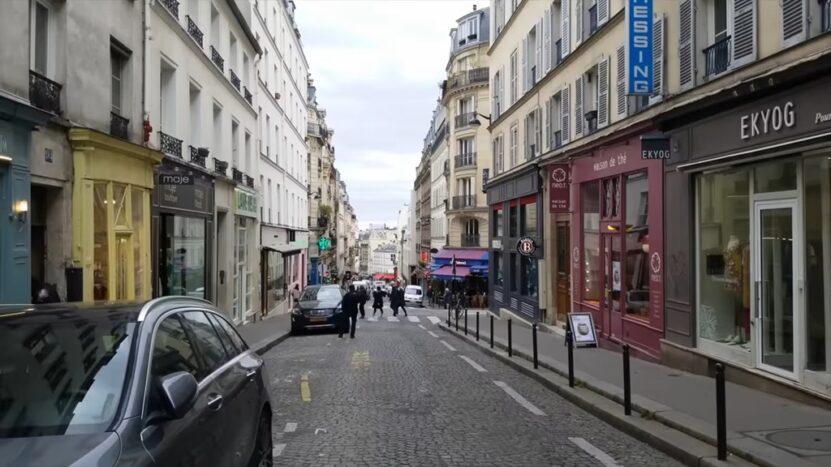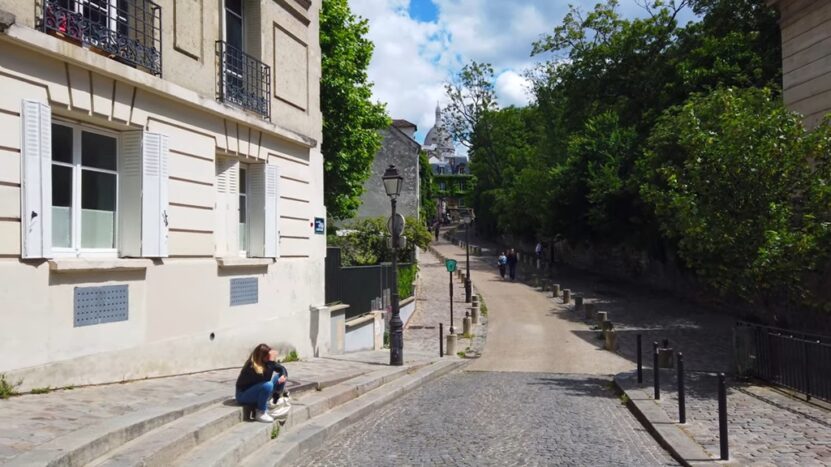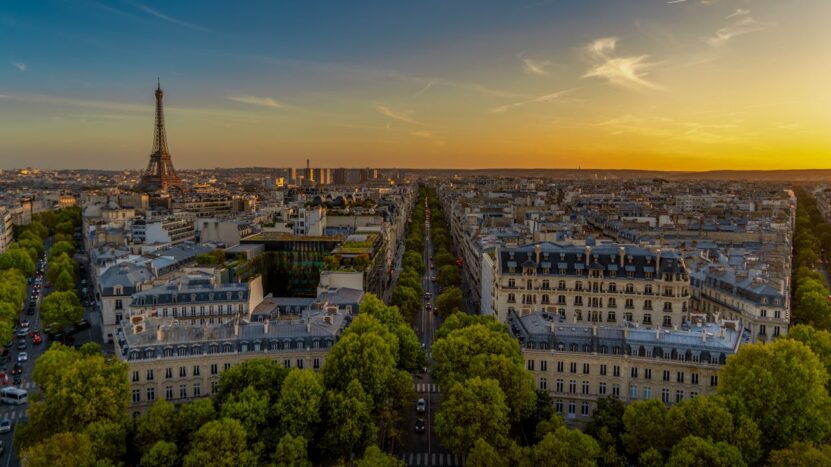Paris may be known as the City of Light, but its streets have become crowded — in 2024 the greater Paris region welcomed nearly 49 million visitors.
Amid the throngs around the Eiffel Tower and Louvre, dozens of quiet residential lanes remain overlooked by most travellers.
These hidden streets offer a chance to slip off the beaten path and into the everyday Paris that locals still know.
Butte-aux-Cailles (13th Arrondissement)

Tucked away in the southeast of Paris, Butte-aux-Cailles feels like a small village hidden inside the capital. This hillside neighbourhood sits apart from the city’s busy avenues, offering cobbled lanes, ivy-covered houses, and a quiet pace of life that locals prize.
Known for its mix of street art, independent cafés, and low-rise 19th-century homes, the area attracts Parisians who want a neighbourhood with personality. The name “Butte-aux-Cailles” means “Quail Hill,” a nod to the area’s rural past before it was absorbed into Paris in 1860.
Visitors who wander here often find narrow lanes such as Rue des Cinq-Diamants and Rue de la Butte-aux-Cailles, lined with murals and small bars where locals gather after work. The atmosphere is informal, creative, and distinctly Parisian, far removed from the formal Haussmann boulevards.
Nearest Metro: Corvisart or Place d’Italie (Line 6) Why locals love it: Cité Florale is one of the most unexpected places in Paris. Hidden behind modern buildings near Parc Montsouris, this small cluster of six streets feels more like a countryside hamlet than part of the capital. Built in the late 1920s, the neighbourhood was designed as a peaceful residential pocket for working families. Each street bears the name of a flower such as Rue des Iris, Rue des Glycines, and Rue des Volubilis. Small pastel houses line the streets, often covered with climbing vines and surrounded by tiny front gardens. The calm atmosphere and absence of cars make it a favorite among locals who want a break from the city noise. Few tourists venture here, and that is what keeps its charm intact. Cité Florale is best visited on foot and in daylight when the sun brings out the colors of the facades and flowers. It takes only a few minutes to explore, but it offers a complete contrast to the Paris most visitors know. Nearest Metro: Cité Universitaire or Glacière (Line 6) Why locals love it: Villa Léandre is a short, residential cul-de-sac in Montmartre that feels completely separate from the busy streets nearby. Built in 1926, it features Anglo-Norman style houses with small gardens, brick facades, and pastel shutters. The street is only about 100 meters long but perfectly preserved, with a quiet, village-like atmosphere. Despite being only a few minutes from the crowded Place du Tertre, Villa Léandre remains largely unknown to tourists. Locals value it for its calm and for the feeling of old Montmartre before mass tourism arrived. The area is private but walkable, and respectful visitors are welcome to admire the architecture. Nearest Metro: Lamarck–Caulaincourt (Line 12) Why locals love it: Rue des Martyrs connects the Notre-Dame-de-Lorette area in the 9th arrondissement with Montmartre in the 18th. It is a narrow, lively street filled with independent shops, bakeries, fromageries, and cafés that serve the local community rather than tourists. The street follows one of the oldest routes leading to Montmartre and has managed to retain its authentic character. Many Parisians come here for their daily groceries, pastries, and coffee. It offers a view of daily life that has almost disappeared in more commercial parts of the city. Unlike the large boulevards nearby, Rue des Martyrs has no chain stores or souvenir shops. It is lined with small family businesses, patisseries, and bistros that have operated for decades. Nearest Metro: Notre-Dame-de-Lorette (Line 12) or Pigalle (Line 2) Why locals love it: Canal Saint-Martin is one of the few central areas in Paris where locals still outnumber tourists. Built in the early 19th century to supply the city with fresh water, it stretches for almost five kilometers from the Seine to the Bassin de la Villette. Today, its tree-lined banks are a gathering place for Parisians who come to walk, picnic, or meet friends after work. The atmosphere is casual and relaxed. Small bridges cross the canal, and stone locks open and close as boats pass through. The streets along the water, such as Quai de Jemmapes and Quai de Valmy, are lined with independent boutiques, cafés, and vintage stores. In recent years, the area has become a symbol of local Parisian culture, with art spaces and weekend markets replacing older warehouses. Despite that, it still feels authentic and unhurried compared with the Seine riverfront. Nearest Metro: République or Jacques Bonsergent (Line 5) Why locals love it: Rue de l’Abreuvoir is one of Montmartre’s oldest and most photogenic streets. It curves gently downhill from Place Dalida toward Rue des Saules, offering a quiet perspective of the neighborhood that most tourists never see. The street dates back to the 14th century, when it led to a watering place for animals, which explains its name meaning “drinking trough.” Lined with ivy-covered houses and cobblestones, it captures the character of Montmartre before mass tourism arrived. The pastel-pink La Maison Rose, once a meeting point for artists such as Picasso and Modigliani, stands at the corner and remains one of the most recognizable façades in Paris. Early mornings and late afternoons are the best times to visit when the light is soft and the crowds around the Sacré-Cœur have not yet reached this part of the hill. The street offers clear views of the basilica above and quiet corners perfect for photography or sketching. Nearest Metro: Lamarck–Caulaincourt (Line 12) or Abbesses (Line 12) Why locals love it: Exploring the quieter side of Paris requires a different pace and mindset than visiting major landmarks. These streets are lived-in neighborhoods where people work, shop, and relax. Moving slowly and respectfully allows you to experience them as locals do. The hidden streets of Paris reveal a city that still belongs to its residents. Away from crowds and monuments, these neighborhoods show how Parisians live, work, and relax every day. Walking through them offers a quiet, authentic view of Paris that most visitors never experience. Exploring them with respect and curiosity is the best way to understand the city beyond its postcard image.
Cité Florale (13th Arrondissement)

Villa Léandre (18th Arrondissement)

Rue des Martyrs (9th and 18th Arrondissements)

Canal Saint-Martin (10th and 11th Arrondissements)
Rue de l’Abreuvoir (18th Arrondissement)

Practical Tips for Exploring Hidden Paris
Weekends bring more people, even to lesser-known areas. Visiting before noon gives you quieter streets and better photo opportunities.
Paris Metro and bus lines connect all of these areas easily. Avoid taxis in narrow streets and instead plan short walks between nearby stops.
Many of these neighborhoods rely on small shops and cafés. Choose local bakeries or corner restaurants rather than chain stores.
Several of these streets, such as Cité des Fleurs, are residential. Avoid loud conversations and always ask before photographing people or private property.
Simple greetings and polite expressions make a difference when talking to shop owners or residents. It shows respect and opens small but genuine interactions.
If you want to connect more deeply with locals and avoid misunderstandings, reliable translation tools can help. Check out Elmura Linguistics’ travel translation services for clear, accurate communication while exploring less-touristy parts of Paris.
Even safe neighborhoods can have quiet spots at night. Use common sense, stay in lit areas, and plan routes in advance.
These are not sightseeing zones but lived spaces. Take time to sit at a café, listen to local conversation, and observe the rhythm of daily life.For the end

